Rome is a cultural wonderland, brimming with artistic riches. Nearly every street leads to a museum, each offering a unique glimpse into different eras and styles.
From ancient masterpieces to contemporary works, there’s something to please every kind of art lover.
In this guide, you’ll get an overview of the 25 best museums in Rome right now. If you’re planning to visit quite a few, you should invest in the Roma Pass or the Omnia and Vatican Pass.
25 Best Museums in Rome Italy
1. The Borghese Gallery | Galleria Borghese
Ah, this might be my favorite museum in Rome. The Borghese Gallery houses one of the world’s most jaw dropping art collections in a chic and luxurious garden villa.
In the 17th century, Cardinal Scipione Borghese meticulously assembled the densely packed collection.
It’s rich in ancient Roman, Renaissance, and Baroque art. It boasts major works by art superstars — Bernini, Titian, Caravaggio, Raphael, Rubens, and Canova.
In particular, the cardinal commissioned Gian Lorenzo Bernini — the Baroque “master of marble” — to create a series of sculptures that would become the pièce de résistance of his gilded sanctuary. The most famous works are David, Apollo and Daphne, and The Rape of Persephone.
Be sure to linger in the Caravaggio Room, where you’ll find six of his paintings. After you’re done admiring the art, take a stroll in the Borghese gardens. This vast and verdant area is Rome’s equivalent to Central Park.
For the full scoop, here’s my complete guide to visiting the Borghese Gallery, with tips for visiting.
It’s essential to a pre-book a ticket well in advance to visit the Borghese Gallery. If you want a guided tour of this magnificent museum, click here.
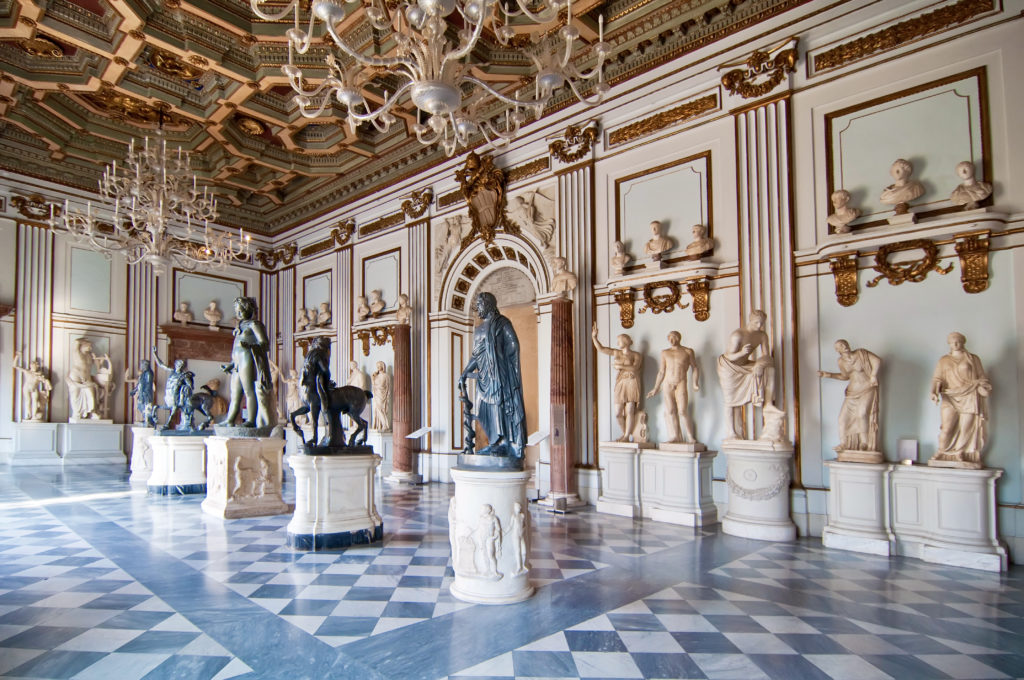
2. Capitoline Museums | Musei Capitoline
The Capitoline Museums sit atop a beautiful square, the Piazza dei Campidoglio on Capitoline Hill. In the center is a grand statue of Marcus Aurelius on horseback (the original is inside).
The Capitoline Museums are Rome’s oldest civic museum. The museum gives you a unique up close look at Rome’s ancient imperial history. If you’re a history or archaeology buff, this is a must see site in Rome.
The Capitoline’s stash of ancient art and artifacts is unparalleled, albeit somewhat disorganized. It’s housed in two buildings, the Palazzo dei Conservatori and the Palazzo Nuovo.
They’re connected by an underground passageway, called the Underground Galleria Lapidaria. It’s lined with evocative funereal steles. Plus, it offers up an amazing view of the Roman Forum.
Inside, you’ll find some of the world’s most famous ancient sculptures — Spinario, Bust of Commodus, Capitoline She Wolf, Medusa, and Dying Gaul.
Here’s my complete guide to the Capitoline Museums. In high season, you’ll want to pre-book a skip the line ticket. If you’re a true fan of ancient sculpture, you can also book a guided tour of the museum..
3. Doria Pamphilj Gallery | Galleria Doria Pamphilj
The Doria Pamphilj Gallery is simply a joy to visit, a heady blend of yesteryear art and magnificent architecture. It’s a hidden gem in Rome, housed in a lavish 17th century Roman-Rococo palace.
The art collection was meticulously assembled and is still owned by a powerful Italian family, the Doria Pamphilj (pronounced Pom-fee-lee).
It all started with Camillo Pamphilj, who gave up his cardinalship to marry his true love, Olympia Aldobrandini. Their heirs still live in the palace.
The Doria Pamphilj boasts over 650 works spanning the 15th to the 18th century, including pieces by Velazquez, Raphael, Bernini, Caravaggio, Titian, Carracci, and Bruegel.
The best works are stashed in the Aldobrandini Gallery and the Aldobrandini Hall. The gallery’s emblematic painting is Diego Velazquez’s Portrait of Innocent X, which has a dedicated room. And the museum has a glittering Hall of Mirrors, reminiscent of Versailles.
Apart from the art, every inch of the walls and ceilings are decorated with beautiful frescos, tapestries, and chandeliers. A true art lover will be utterly delighted by this museum experience.
It’s so rare to enjoy art in its original historic setting, a yesteryear type experience. And there’s no crowds. You can admire the art in peace and quiet without being jostled by crowds and selfie sticks.
Here’s my complete guide to visiting the Doria Pamphilj Gallery. Click here to book an entrance ticket.
4. Castle Sant’Angelo | Museo Nazionale di Castel Sant’Angelo
Castle Sant’ Angelo is also known as Hadrian’s Mausoleum. Hadrian built it on the banks of the Tiber River in 139. He also erected the Bridge of Angels, which connected central Rome to his mausoleum.
The bridge is now lined with 10 angels, designed by Bernini and commissioned by Pope Clement IX. Each statue holds an object of Christ’s passion.
The cylindrical castle was richly decorated. Originally, it was faced with travertine marble, pilasters, and bronze. By the 5th century, the mausoleum was converted into a miltary fortress.
It was renamed Castle Sant’ Angelo in the 5th century. Legend holds that the Archangel Michael appeared above the castle, sheathed his sword, and magically put an end to the plague.
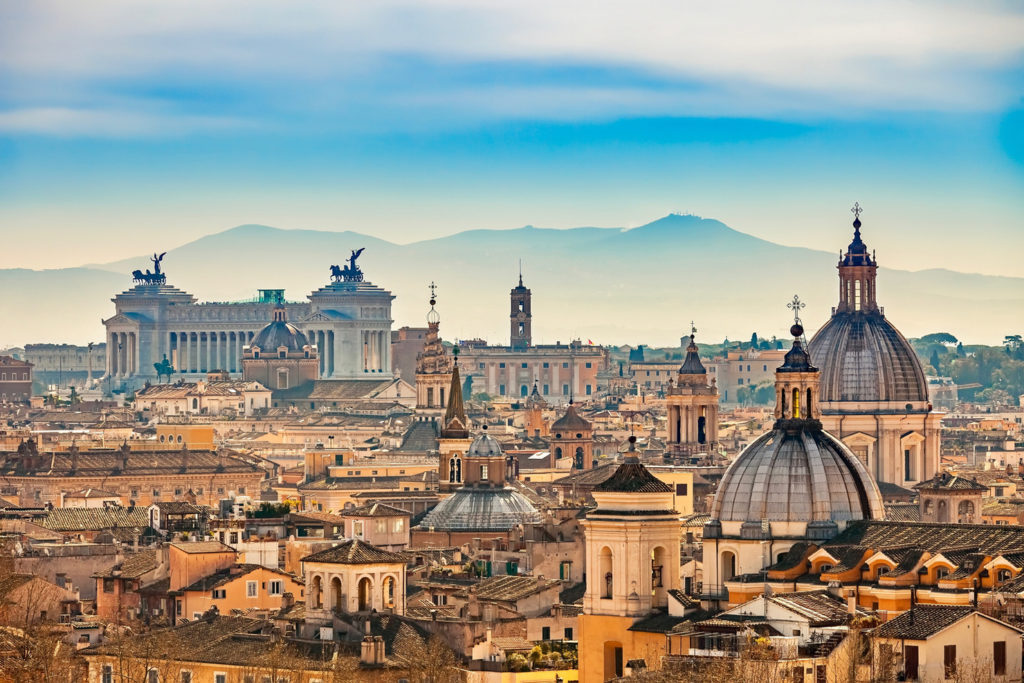
It’s a unique museum with a mix of art and artifacts. You’ll find sumptuous papal apartments decorated with frescos by Pinturicchio, medieval firearms, paintings, and sculpture, and military memorabilia.
In 1536, a marble and bronze statue of Archangel Micheal was perched on top. There are gorgeous 360 views of Rome and St. Peter’s Basilica from the Terrace of the Angel. The museum also has a bar/coffee shop with splendid views.
Click here to pre-book an entry ticket. Or, book a guided tour with fast track entrance.
5. Villa Farnesina
Designed by artist-architect Baldasarre Perruzi, Villa Farnesina is a magnificent off the beaten path museum in Rome. It’s located in Rome’s lovely Trastevere neighborhood. The museum is home to torrid love stories and secret Raphael paintings.
Between 1506-11, the wealthy banker Agostino Chigi from Siena built Villa Farnesina, then titled Villa Chigi. Chigi wanted a show-offy party pad to entertain Roman VIPs. He created a beautiful space, a Roman pleasure garden, that was bright, airy, and infused with Renaissance beauty.
The villa is decorated with racy mythological frescos by Renaissance painters Raphael, Peruzzi, and Sebastian del Piombo. Check out the Loggia of Cupid and Psyche, the Hall of Galatea, and the Room of the Perspectives.
The highlight is the Loggia of Cupid and Psyche, painted by Raphael and his workshop. The beautiful and animated frescos will take your breath away.
Cavorting gods and goddesses cover every inch of the walls. The theme is “love conquers all.” In the next room, the Hall of Galatea, you’ll find Raphael’s famous Triumph of Galatea.
Here’s my complete guide to visiting the Villa Farnesina. Click here for a guided tour of the lovely villa. Click here for a guided walking tour of the villa and the Trastevere neighborhood.
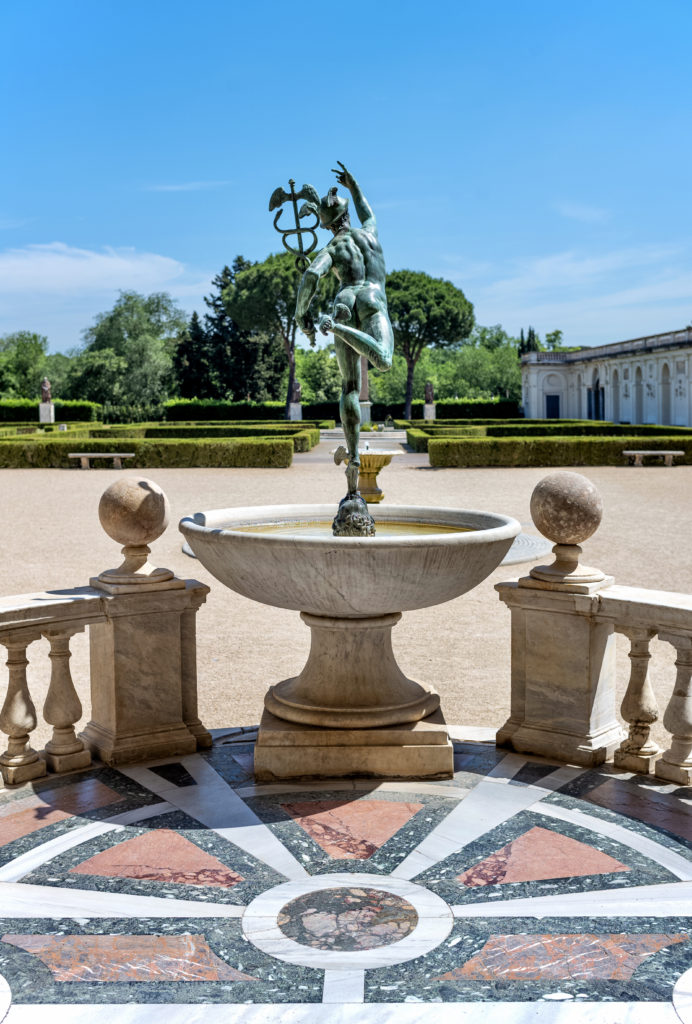
6. Villa Medici | Accademia di Francia a Roma
Built in 1540, the Villa Medici is an opulent Renaissance palace, just a stone’s throw from the Spanish Steps.
It’s a Mannerist style villa with a garden next to the larger Borghese gardens. Founded by Ferdinando I de’ Medici, Grand Duke of Tuscany, the villa is now property of the French State.
The villa houses paintings, sculptures, and period rooms that you can only visit via a 90 minute guided tour. It also offers a stunning skycap view over Rome from its perch on Pinchon Hill.
7. Palazzo Barberini | Galleria Nazionale d’Arte Antica
Palazzo Barberini is an underrated museum in Rome. But it’s definitely an art lover’s art gallery.
Recent restorations give it an unapologetically grand wow factor. The museum holds some of Europe’s classic paintings by the great masters.
The Barberini Palace is 12,000 square meters and has 187 rooms. It has beautiful staircases by Borromini and Bernini.
The museum is home to one of Raphael’s most famous paintings, La Fornarina. It’s a painting of the “baker’s daughter,” whom Raphael had fallen in love with while fresco painting in the Villa Farnesina.
Other master works include Caravaggio’s Narcissus and Judith and Holofernes, Holbein’s Henry VIII, and the ceiling fresco by Pietro da Cortona.
Though the painting is not very well preserved, I fell for Baroque painter Artemisia Gentileschi and her beautiful Self Portrait.
I had just listened to an Art Curious podcast about her famous painting Judith Beheading Holofernes, which is in the Uffizi Gallery in Florence. She survived a rape by her tutor. After a move to Florence, she flourished and was the first woman admitted to the Accademia.
READ: Artemisia Gentileschi’s Life and Paintings
8. Galleria Corsinsi | Corsini Gallery
Located just opposite Villa Farnesina, Galleria Corsini is part of Rome’s Arte Antica collections, along with Galleria Borghese and Palazzo Barberini.
The museum is housed in an impressive late-Baroque palace built by the wealthy and prominent Corsini family. The gallery has an impressive collection of Italian art from early Renaissance to the late 18th century.
It boasts works by Caravaggio, Fra Angelico, Van Dyke, Rubens, and Reni. The famous Caravaggio piece is John the Baptist (1604).
The highlight of the museum may be the Biblioteca Corsini, a gorgeous library embellished with columns, trompe l’oeil painted busts, and elaborate ceiling frescoes.
9. Museo Keats-Shelley | Keats-Shelley Memorial House
Nestled at the foot of the Spanish Steps, the Keats-Shelley Memorial House will appeal to literary pilgrims.
It’s dedicated to its two namesake Romantic poets from England. The museum is the apartment where John Keats died at age 25 of tuberculosis.
Keats’ furniture is long gone. But the museum preserves Keats original fireplace and ceiling decorated with floral motifs. There are also many letters and artifacts from the period. And a working library for scholars of the poets.
10. Galleria Sciarra
Galleria Sciarra is largely unknown architectural beauty in Rome. It’s located just a few steps away from the iconic Trevi Fountain and the fashionable Via del Corso.
It’s not a museum per se. But its beautiful courtyard is a living museum, transporting visitors back to the height of the Art Nouveau movement.
The wealthy Sciarra family commissioned the opulent courtyard in the late 19th century. Every inch of the arcade walls are adorned with colorful murals painted by Giuseppe Cellini. The theme is the “glorification of women.”
The glass and iron ceiling lets sunlight spill into the courtyard, illuminating the details in the frescoes. When the sun goes down, lights turn on to bathe the courtyard in a warm yellow glow.
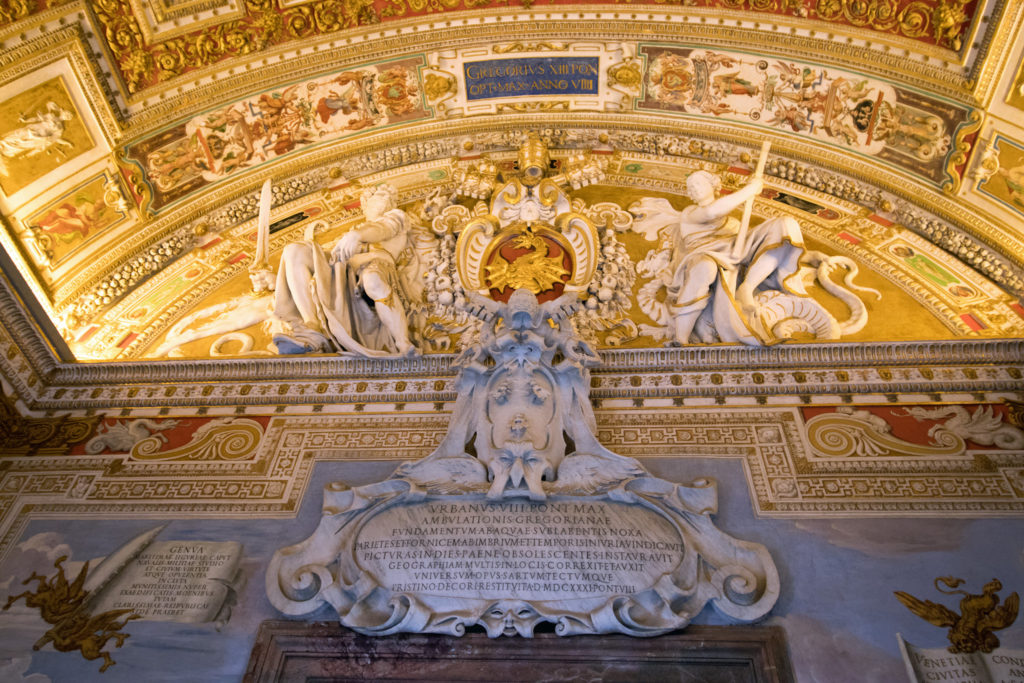
11. Vatican Museums | Musei Vaticani
The Vatican Museums are undoubtedly the best museum in Rome, or in Vatican City more precisely. They Vatican Museums are the public art and sculpture museums in the Vatican City complex.
They’re housed in former wings of the Vatican Palace. Much of the work was collected by Pope Julius II, the imperious “warrior” pope who left a staggering legacy.
A museum path takes you through the long corridors and wings of the Vatican Museums. Most of the fine art is in:
- Vatican Pinacoteca (the painting gallery)
- Pio-Clementino Museum (the sculpture gallery)
- Gallery of the Candelabra (more sculpture)
- Raphael Rooms
- Borgia Apartments
- Sistine Chapel
But you’ll also be dazzled by the corridors themselves.
Along the way, you’ll pass the gorgeous tapestries designed by Raphael’s workshop and the awe-inspiring Map Gallery. The Map Gallery has a crusted gold ceiling and holds what were the Vatican’s official maps.
At the end of your long march, you’ll arrive at the Sistine Chapel, the highlight of any Vatican visit.
In 1508, Pope Julius II summoned Michelangelo from Florence to paint the ceiling of his private chapel. They depict scenes from Genesis and seem to open up the chapel to heaven.
In 1533, Michelangelo went back to paint The Last Judgment on the altar wall. After his death, underpants or draperies were added to the fresco during the Counter Reformation.
If you don’t book a guided tour, you absolutely must pre-book a skip the line tickets. Or else you’ll be stuck in line for hours unless it’s the dead of winter.
Most guided tours don’t cover everything in the Vatican. For example, you will likely miss the Raphael Rooms and the specialty museums on a standard tour.
Here are some of your Vatican tour options. You can pick a tour tailored to your own interests.
- 2.5 hour overview on a skip the line small group guided tour
- 3 hour no wait tour that also includes the Raphael Rooms
- 3.5 hour tour Vatican visit with a guided tour of St. Peter’s Basilica
- 3 hour Friday night tour of the Vatican
- Vatican tour that includes a climb of the dome of St. Peter’s Basilica
- 2-3 hour private tour of the Vatican
If you’re taking a guided tour, you’ll access St. Peter’s Basilica from the back left corner of the Sistine Chapel. Once inside the basilica, you cannot re-enter the Vatican Museums.
12. MAXXI, the National Museum of Art of the 20th Century
Opened in 2010, this museum is billed as Rome’s first museum dedicated to “contemporary creativity.” Maxxi is housed in a concrete and steel building designed by starchitect Zaha Hadid. Like the Guggenheim Bilbao in Spain, the museum may be more famous for its architecture than its art.
But if you want to see more modern works, this is your place. It’s one of the few spots in Rome where you can see cutting edge work.
There’s no permanent collection. The museum hosts temporary exhibitions, performances, and workshops. You have to check the museum website to see what’s featured at any given time.
13. Museum of the Altar of Peace | Ara Pacis Museum
The Roman Senate commissioned the Ara Pacis, or Altar of Peace, in 13 BC. The altar was built to honor soon-to-be emperor Augustus, who had just pacified and defeated the barbarians.
His victory marked the beginning of the Pax Romana, a 200 year golden age where arts and architecture flourished.
The altar was once part of a large complex. It was moved to its current location in 1938. The Ara Pacis Museum opened in 2006 and is dedicated to this single monument.
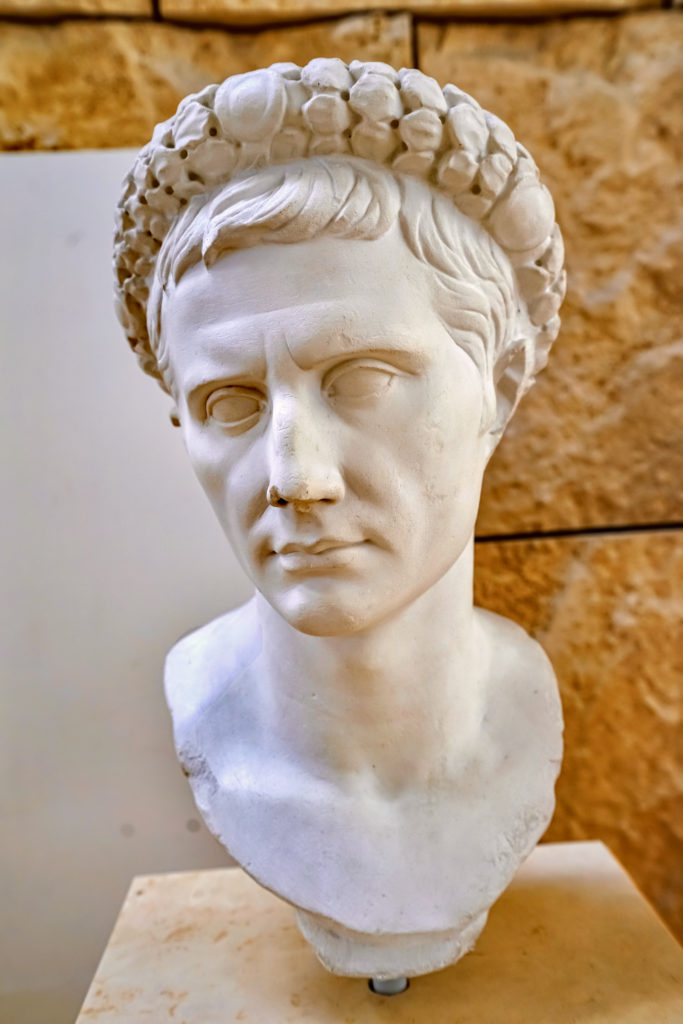
The museum is housed in a modern pavilion designed by American architect Richard Meier in 2006. It was rather controversial at the time. The Romans wanted something more ancient looking.
When you head up the stairs, you’ll see an absolutely massive amount of relief sculpture that wraps around the whole altar.
You’ll see portraits of actual Romans, including the family of Augustus. And the largest vegetal scroll from the classical world.
The building also has a digital library on all things related to Augustus. Above the auditorium is an excellent rooftop terrace with views of the Mausoleum of Augustus.
Click here to book a skip the line ticket for the museum. The ticket also includes entry to Augustus’ Mausoleum, which is temporarily closed.
14. Villa Giulia | National Etruscan Museum
If you are obsessed with the elusive Etruscans who lived around 600 B.C., head to the Museo Nazionale Etrusco di Villa Giuli, housed in the Villa Giulia. It’s part of the massive Borghese Gallery park complex.
It’s a true Rome hidden gem and one of the best museums in Rome for history buffs. It’s just a short stroll from the Borghese Gallery, so you can combine the two museums on a single trip.
The villa was built by Pope Julius III as a pleasure pad escape. Several architects were involved, with Michelangelo lending design advice.
The museum houses the greatest Etruscan collection in the world. You can see that, in fact, the Etruscan did produce some high fine art.
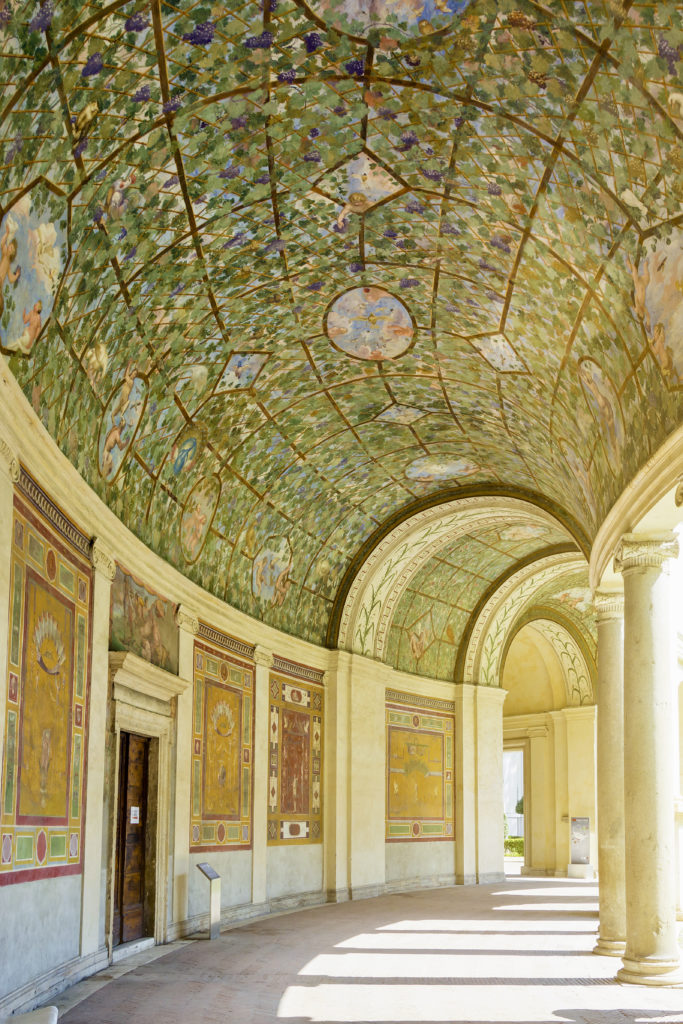
Highlights include exquisite pieces of gold jewelry, urns, the sarcophagus of the spouses (identical to the one in the Louvre), the 6th century B.C. Apollo of Dei sculpture, and the Pyrgi Tablets.
The Pyrgi Tablets are an ancient example of Etruscan writing, though it’s not been deciphered. There’s also a reconstructed Etruscan temple in the villa gardens.
Click here to book a skip the line ticket. If you are a fan of Etruscan history, click here to book a guided tour of the museum.
15. Palazzo Altemps
The 15th century Palazzo Altemps is a quiet oasis at the northern end of Piazza Navona. It’s definitely worth a visit if you admire ancient sculpture and want to escape the crowds.
The core of the collection are the superb sculptures from the Ludovisi collection. It was compiled by Ludovico Ludovisi, a nephew of Pope Gregory XV. The palace also has some lovey frescoed rooms, particularly the Sala delle Prospettive Dipinte.
The Palazzo Altempts isn’t a cluttered museum either. You’re given ample berth to view the sculptures.
The major must see works include Apollo the Lyrist, the Ludovisi Athena, the Ludovisi Throne, the Grande Ludovisi Sarcophagus, the Ludovisi Ares, the Ludovisi Gaul, and Gallic Soldier and his Wife Committing Suicide.
The last piece was discovered along with the Dying Gaul masterpiece that’s in the Capitoline Museums.
The sculptures were found during construction of the Villa Ludovisi, which was built on land that once belonged to Julius Caesar.
Pro Tip: The Palazzo Altemps is one of four museums that together make up the Museo Nazionale Romano, or National Museum of Rome. (They were separated in the 1990s.)
A combined ticket to all four, 15 €, is is valid for three days and gives you admission to the the Palazzo Massimo alle Terme, the Terme di Diocleziano, and the Crypta Balbi.
16. Museo Nazionale Romano di Palazzo Massimo
Palazzo Massimo is a wonderful hidden gem in Rome. It’s one of Rome’s newer museum spaces.
But you’ve definitely seen it. The museum is next to Rome’s unlovely Termini station in the north. Don’t let that put you off.
Once inside, you’re in a magnificently restored building bursting with a wealth of fine sculptures, mosaics, and frescos.
Three galleries on the ground floor are dedicated to busts and statuary from the last years of the Roman Republic. You can see the beautiful, and incredibly detailed, statue of the Emperor Augustus.
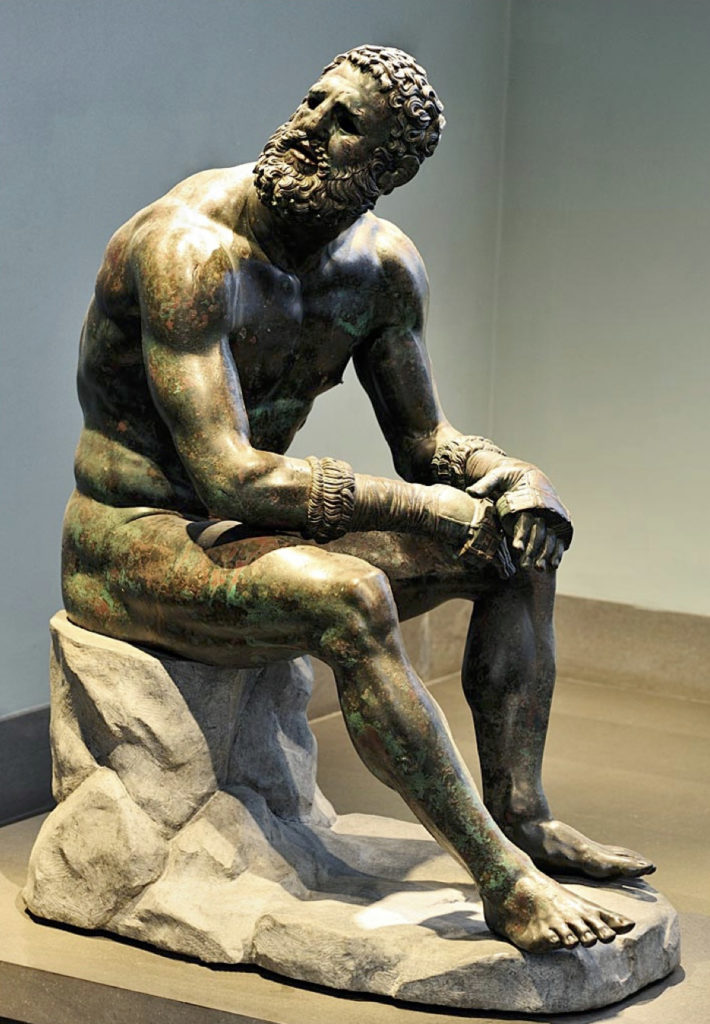
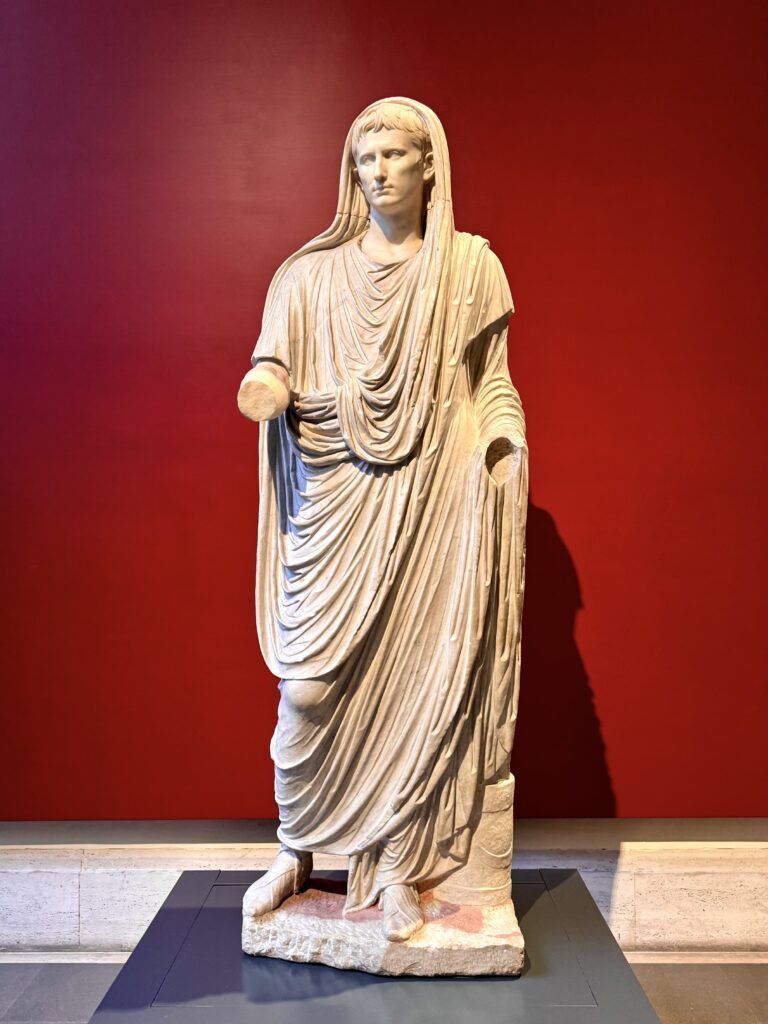
The other stand out sculptures are the Sleeping Hermaphrodite, Boxer at Rest, and the Discus Thrower. Boxer at Rest is especially spectacular.
The sculpture was discovered on the Quirinal Hill of Rome in 1885 near the ancient Baths of Constantine. Seated on a rock, the scarred boxer is catching his breath between the back-to-back matches that were routine for Greek boxers.
But perhaps my favorite part of this little museum is in Room II on the second floor. That rooms houses the exquisite detached garden frescos that were removed from the House of Livia on Palatine Hill.
Livia was the wife of Emperor Augustus. The villa was discovered during the Renaissance.
Ancient Greco-Roman paintings are extremely rare, so this is a true treasure. The illusionistic garden scene is meant to suggest that even when you were inside, you were outside.
17. Museo Napoleonico | Napoleon Museum
Housed in the Palazzo Primoli, the Napoleon Museum is dedicated to the period of Napoleon and his connection to Italy.
Located just north of the Piazza Navona, the museum contains the collections of Count Giuseppe Primoli. He was the great grandson of Joseph and Lucien Bonaparte.
Primoli’s aim was to present the imperial family from his own private point of view.
The museum is still arranged as he envisioned it. You’ll find painting, artifacts, sculptures, Napoleon’s outfits, books, memorabilia, etc. If you’re a history buff, this museum is for you.
18. The Quirinal Palace, Rome
The Quirinal Palace, or Palazzo del Quirinale, was built by Gregory XIII in 1574 as a summer residence. Now it’s the official home of the Italian President.
Visitors can explore the opulent State Rooms, used for official functions and adorned with luxurious furnishings and frescoes.
The palace also includes the historically significant Papal Apartments, showcasing art and relics from its ecclesiastical past.
Art enthusiasts will appreciate the palace’s extensive art collection, spanning various periods and styles. Additionally, the Hall of the Cuirassiers, with its military significance, and the beautifully decorated Chapel of the Annunciation are noteworthy highlights of this majestic residence.
Formerly the stables, the Scuderie del Quirinale is next door. It is a prominent venue for high-profile temporary exhibitions in Rome.
Tip: You can only visit on a guided tour on certain days. You’ll have to bring your passport or ID to check in. The name on your ID and ticket reservation must be identical.
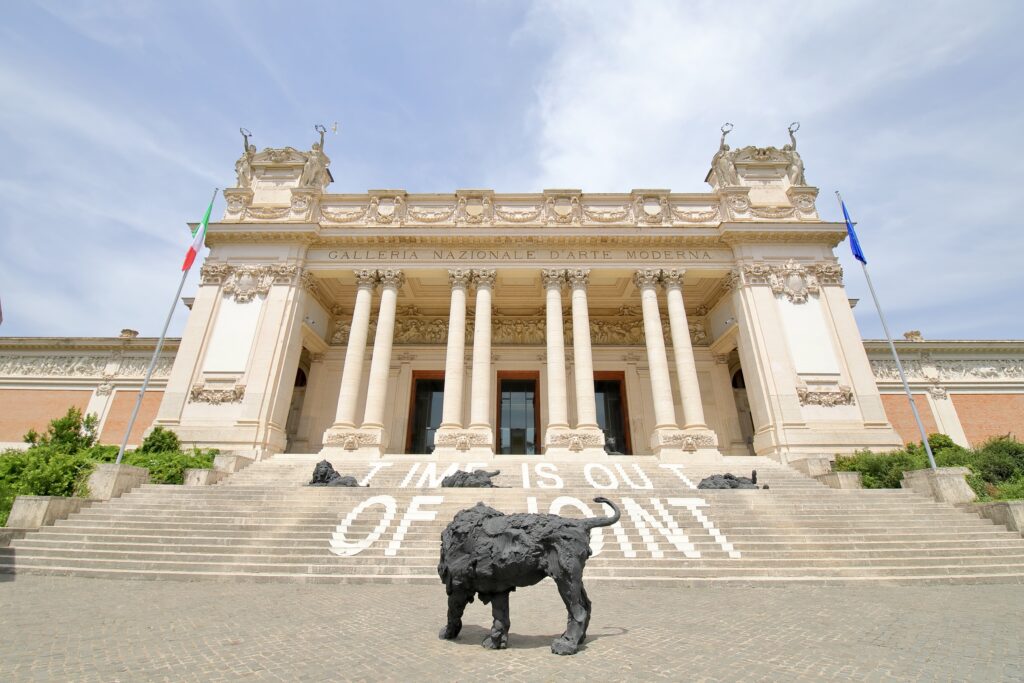
19. Galleria Nazionale d’Arte Moderna | Modern Art Gallery
The Galleria d’Arte Moderna is home to one of the largest collections of contemporary Italian art in the world.
The gallery is located in the Villa Borghese park. It was established in 1883, making it one of the oldest national galleries dedicated to modern art in the world.
The museum boasts an impressive collection of more than 20,000 works, including paintings, drawings, sculptures, and installations. This collection primarily focuses on Italian art from the 19th and 20th centuries, but it also includes significant works by international artists.
You’ll find artworks by renowned Italian artists such as Giacomo Balla, Umberto Boccioni, and Amedeo Modigliani, as well as international artists like Klimt, Van Gogh, and Pollock.
20. Museo di Roma | Palazzo Braschi
Housed in the Palazzo Braschi, the Museum of Rome is a civic museum devoted to the history, art, and traditions of Rome from the middle ages through the 20th century.
This is where you go to get a taste of local Rome and learn about its aristocratic families. You can see how Rome changed by studying the landscape paintings and portraits.
The museum’s collection includes a wide range of artifacts, ceramics, paintings, sculptures, and decorative arts. The museum’s exhibitions are divided into various thematic sections.
One of the highlights of the museum is its collection of paintings, which includes works by renowned Italian artists from the 17th to the 19th centuries. You can admire masterpieces by artists such as Pietro da Cortona, Carlo Maratta, and Francesco Hayez.
>>> Click here to book a ticket
21. Palazzo Spada
Palazzo Spada is located just a few minutes from Campo de’ Fiori. The Renaissance palazzo is named after Cardinal Spada, who purchased the palace in 1632. He hired the architect Borromini and beautifully transformed the building.
The small gallery consists of four rooms filled with 16th and 17th century work by Caravaggio, Reubens, and Titian.
But the museum’s real highlight is the internal courtyard, where Borromini created a forced perspective trick or optical illusion.
The long corridor of columns seems endless. But it’s really only 28 feet in length. A towering sculpture appears at the end, but that’s only 23 inches high.
>>> Click here to book a ticket for Palazzo Spada
22. Giovanni Barracco Museum
If you’re a fan of ancient sculptures, the Giovanni Barracco Museum is one of the best museums in Rome to visit. It’s housed in a beautiful 16th century palace.
Located close to Campo de’ Fiori, it’s an intimate and free museum that has recently reopened.
Giovanni Barracco studied the classics at a young age and became enamored with ancient civilizations. He bequeathed his antiquities collection to the city in 1902. You’ll find a remarkable collection of Egyptian, Mesopotamian, Phoenician, and Etruscan art.
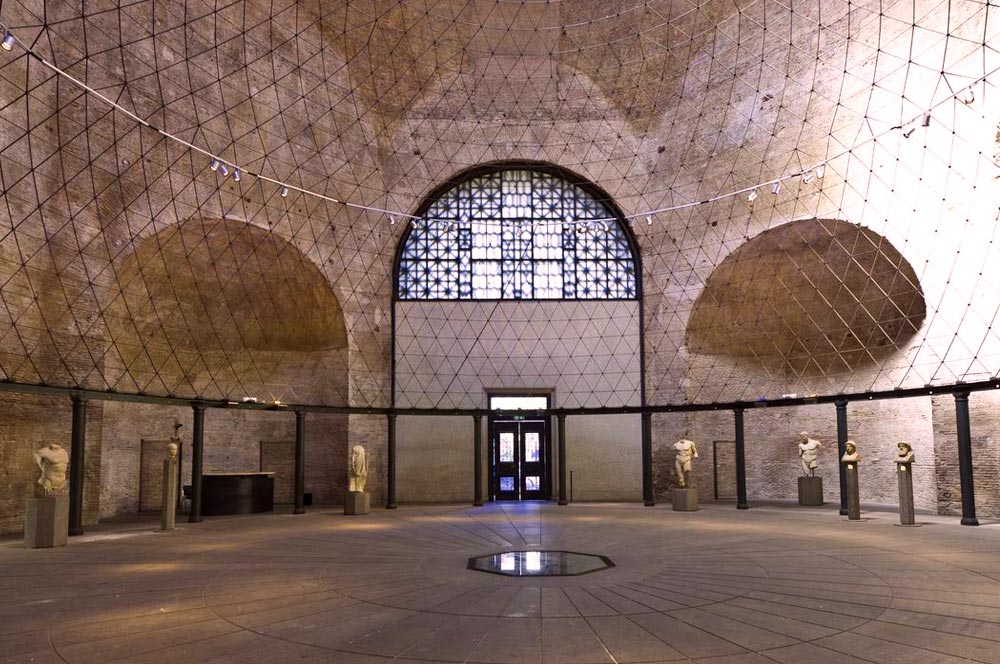
23. Museum of Rescued Art
The Museo dell’Arte Salvata is a new museum in Rome that opened in June 2022. It’s housed within the massive Octagonal Hall in the National Roman Museum in the Baths of Diocletian.
It display antiquities that were recovered after being illegally sold, looted, lost, or found after natural disasters. The museum is a testament to Italy’s “art squad,” a group who repatriates antiquities from foreign museums and private collections abroad.
Right now, 1,000 objects are on display. But Italian policy is to return them too the museum closest to the site where they came from. This process takes time and there is a team of dedicated archaeologists tasked with determining where the artifacts will ultimately land.
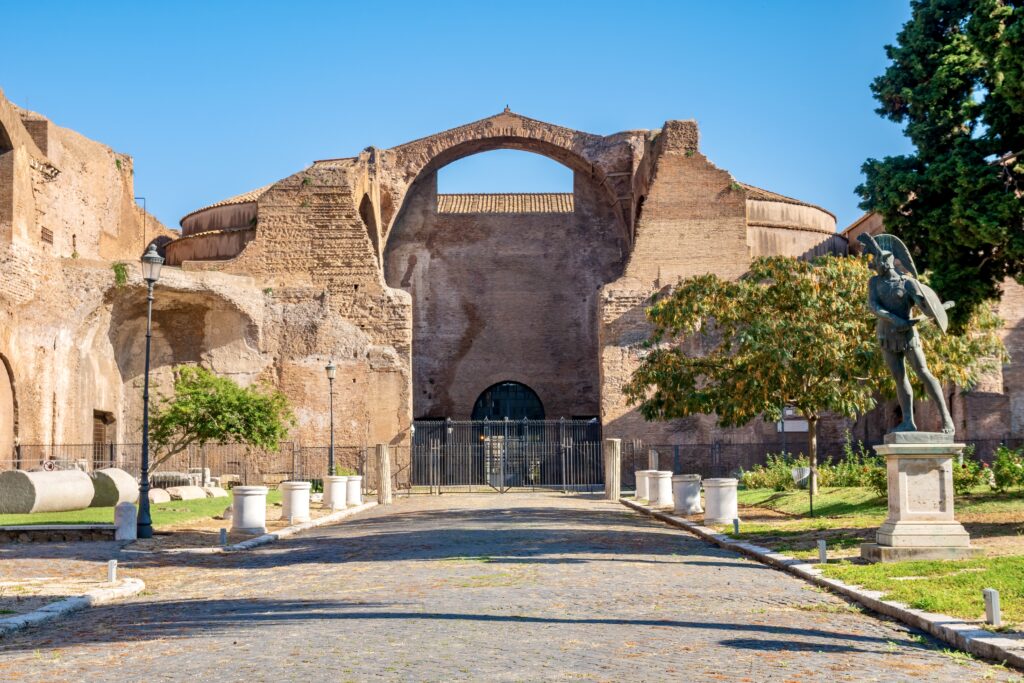
24. Baths of Diocletian
The Baths of Diocletian were were the largest of the imperial public baths in ancient Rome. They were completed in 306 A.D. Today, they are part of the National Museum of Rome.
The baths were meant to surpass the Baths of Caracalla and could accommodate 3,000 citizens.
The baths were built using the typical bath design of Roman times — with a frigidarium (cold), tepidarium (warm) and caldarium (hot), large bathing chambers, and gymnasiums.
On the ruins of the frigidarium, Michelangelo was commissioned to build a church, the Basilica of Santa Maria deli Angeli e dei Martiri. You can visit the church and a modern museum
25. Baths of Caracalla
The Baths of Caracalla, one of the most monumental ruins from Ancient Rome. The baths were inaugurated by Emperor Caracalla in 216. They were the most luxurious thermae of Rome.
Construction of the baths began in 206 A.D., under the direction of Emperor Septimius Severus. The original red brick walls are still standing, a towering shell.
You can visit the ruins of the thermae, a library, and tour the cavernous subterranean corridors (opened to the public in 2019). In the latter, you’ll find a rare ancient mithraeum, which was a was a worship center for the mysterious religious cult of Mithraism
For more information, here’s my detailed guide to the Baths of Caracalla. Click here to pre-book a skip the line ticket.
26. Palazzo Colonna
The 17th century Palazzo Colonna was designed to showcase the Colonna family’s impressive art collection. This Baroque masterpiece is overflowing with art and frescoes – it’s simply breathtaking!
This Baroque gem is more than just its gilded surfaces. It houses an incredible art collection, featuring stunning frescoed ceilings and walls, the private apartments of Princess Isabelle, and the Pio Pavilion.
As you explore the residence, you’re surrounded by walls adorned with Old Master pieces by artists like Pinturicchio, Carracci, Guido Reni, and Tintoretto.
Tip: The museum is only open on Saturday from 9:00 am to 1:15, so plan accordingly if you want to see this beauty.
I hope you’ve enjoyed my guide to the best museums in Rome. You may enjoy these other Rome travel guides and resources:
- 2 day itinerary for Rome
- 3 day itinerary for Rome
- 4 day itinerary for Rome
- 5 day itinerary for Rome
- Hidden gems in Rome
- Best museums in Rome
- Archaeological sites in Rome
- Guide to Palatine Hill
- Guide to the Roman Forum
- Guide to the Colosseum
Pin it for later.

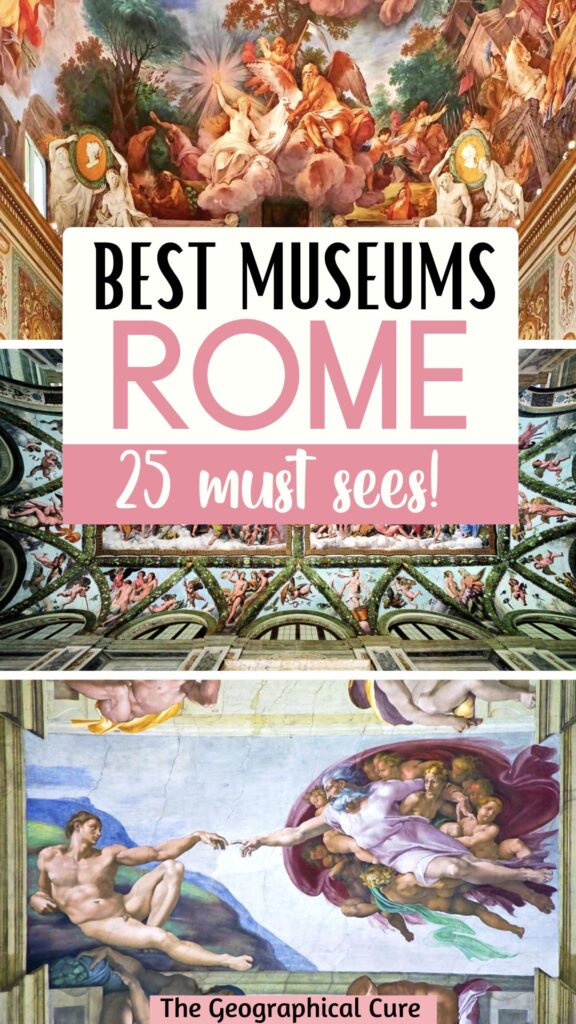
This is such a great guide. I visited many of these on my last trip to Rome, but it looks like I have to go back. Thanks so much for creating this incredible guide!
Thank you. I’ve been to Rome four times. There is always more to do. The Imperial sites only scratch the surface.There are so many hidden gems. I hope you get back there soon!
Thank you, thank you, for this guide and all the wonderful material on your site. It’s been so helpful to me in planning trips to Italy – to towns and cities off the beaten track.
Thank you Kathy! I’m so glad.